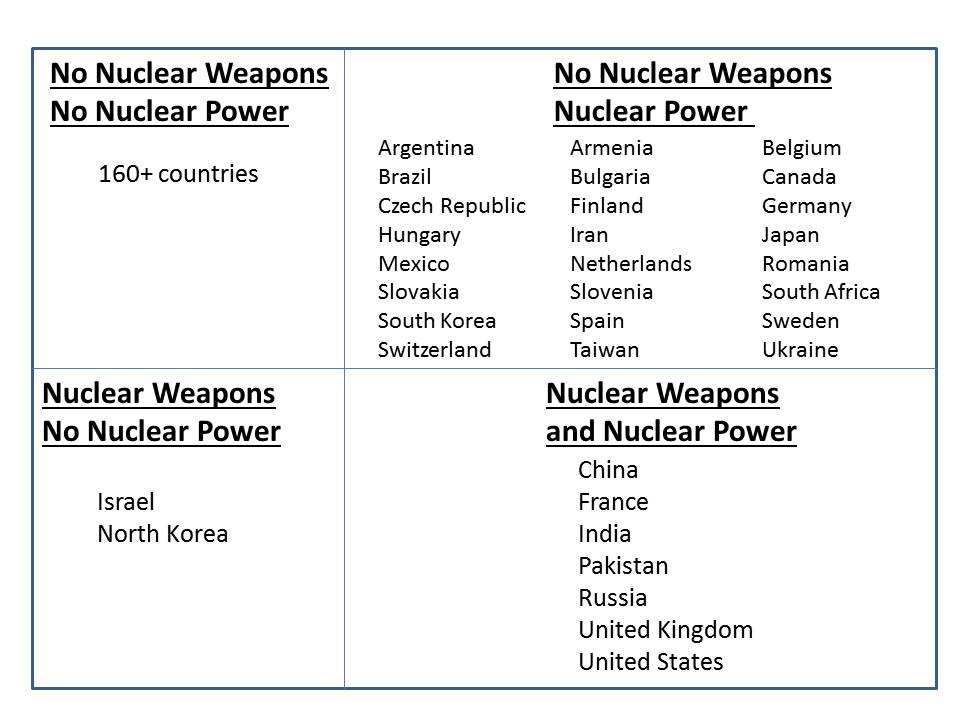There seems to be two very separate conversations regarding nuclear technology, one about its use as a power source and another about its use as a weapon. This separation is understandable, after all, people often distinguish between ensuring energy supplies and military goals. Of course, in the real world, military goals and ensuring energy supplies have been intimately intertwined in the past, present and undoubtedly in the future.
With regard to nuclear power and nuclear weapons, there are clear overlaps in the process and technology. Both share basic steps like uranium mining and enrichment though they differ in the concentration of the isotopes used in the fuel as well as the delivery system.
The overlapping process and technology in nuclear energy and nuclear weapons opens up a conversation about the membership of these nuclear clubs.
The nuclear energy club is a large, growing crowd. According to the International Atomic Energy Agency there are 31 countries that produce nuclear power. The largest producers (by megawatt) are the United States, France, Japan, Russia and South Korea. In America, nuclear power produces less than 20 percent of the total national electric production while in France, Belgium and Slovakia more than half of the national electric production is from nuclear power.
According to the Federation of American Scientists the nuclear weapons club is rather small, with nine countries having any current inventory and one country (South Africa) being a former member of the club. Of these nine countries, nearly 95 percent of the military stockpile is associated with the United States and Russia Federation and only the United States has used nuclear weapons in war. The other seven nuclear weapon countries are France, China, the United Kingdom, Israel, Pakistan, India and North Korea.

It is interesting to explore the relationship between these two clubs given the fact that they have some overlapping technology. Seven of the nine countries in the nuclear weapons club are also in the nuclear power club, with Israel and North Korea being the two holdouts. Looking the other direction, we see that of the 31 nuclear power countries, 24 are not members of the nuclear weapons club. That is to say, nearly 80 percent of the countries that have functioning nuclear energy plants in their country do not have nuclear weapons.
The decision for a country to have nuclear power but not nuclear weapons is an interesting one given the similarity in technology. It is a decision that countries can and may change over time. This policy choice is influenced by many factors from international agreements (like the Treaty on the Non-Proliferation of Nuclear Weapons) to security concerns to real-world constraints (financial and technology) and, in some cases, the will of the citizens.
The American media seems to actively discuss nuclear weapons in the context of North Korea, Iran or terrorist "dirty bomb" but rarely in the context of general global risks. This failure to discuss the general risk of nuclear weapons is important since nuclear weapons pose a far more immediate threat to humanity than climate change, a topic that garners far more media attention these days.